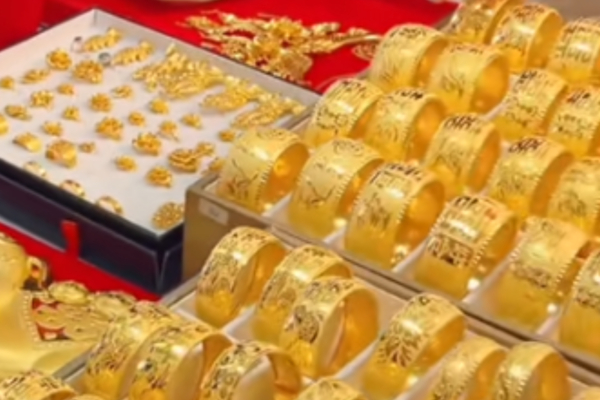Since November 1st, mainland China has implemented a new policy on gold taxation, leading to a strong market response. Major brands have increased the prices of gold jewelry and bars, resulting in a sharp decline in customer flow at gold retail stores in many areas. Industry professionals believe that the era of “opening a gold shop to make money” has come to an end.
On November 1, 2025, the Ministry of Finance and the State Administration of Taxation jointly issued an announcement regarding the gold taxation policy, categorizing the use of physically delivered gold into investment and non-investment purposes. For non-investment purposes, exchanges are exempt from value-added tax. The input tax amount is calculated at 6% deduction rate based on the amount indicated on the ordinary invoice.
The input tax rate deducted by members has been reduced from 13% to 6%, resulting in a 7% increase in tax costs. This means that gold enterprises or physical gold-selling stores will bear an additional 7% deduction cost due to the reduced deduction rate, which has become a core factor in the recent increase in gold prices, directly passed on to consumers.
Reporters from the Securities Daily found that on November 4th, the prices of 24K gold jewelry from brands like Lao Feng Xiang and Chow Tai Fook increased by 60 to 70 yuan per gram. For example, the listed price of 24K gold jewelry at Lao Feng Xiang increased from 1165 yuan per gram on November 1st to 1235 yuan per gram.
After the implementation of the new tax policy, the gold jewelry and bars market experienced significant fluctuations. On November 6th, journalists from the First Financial found in Shenzhen Shuibei Gold Market that gold prices had fluctuated frequently in recent days, with the gap between buying and selling prices expanding from the usual over 20 yuan to over 100 yuan.
Many jewelry retailers have adjusted prices by 7% to 8%, with some as high as 13%. Some gold bar products have been temporarily suspended for sale online and offline, as businesses adopt a wait-and-see strategy due to cost and tax pressures.
Journalists from the First Financial visited several gold and diamond stores in Guangzhou and found that even in the core business districts, stores of renowned brands like Chow Tai Fook and Lao Feng Xiang had very limited customer traffic during off-peak hours. Some suburban stores even experienced an hour without any customers. Industry insiders lament that the era of “opening a gold shop to make money” has ended.
During mainland China’s “Double 11” shopping festival, gold retail stores followed e-commerce channels in offering discounts, but the effect was limited. For example, on November 6, the price of gold jewelry at Chow Tai Fook was 1259 yuan per gram, compared to 1198 yuan per gram on November 2, an increase of 61 yuan per gram, yet the flow of customers during weekdays remained minimal. Merchants stated that market sentiment was significantly cautious after the tax adjustment, causing stagnation in gold bar sales and gold recycling business.
According to data from several gold jewelry brands, since the implementation of the new policy, the prices of some gold jewelry have surpassed 720 yuan per gram, nearly a 10% increase from the beginning of the year. Retailers in many places have reported a significant decrease in customer flow and transaction volume, leading to stagnant sales of gold bars and investment gold products.
A Citi research report indicates that in the worst-case scenario, gold procurement costs will increase by 7%. It is still unclear whether the intention of this policy is solely to suppress gold bar or coin investments by raising transaction costs, or to also curb demand for gold jewelry. It is expected that the authorities will provide further clarification.
Morgan Stanley believes that this adjustment increases the procurement costs for small-scale retailers buying gold bars, encouraging them to purchase directly from exchanges. In the medium term, a more regulated gold market is still a positive for well-managed jewelry brands.

